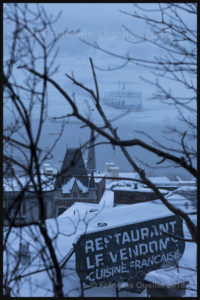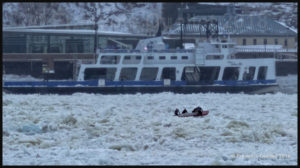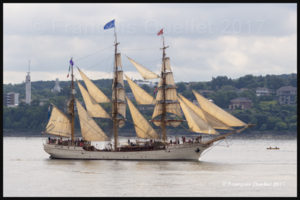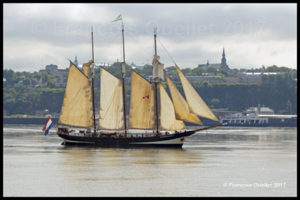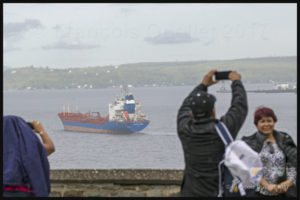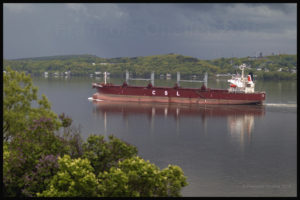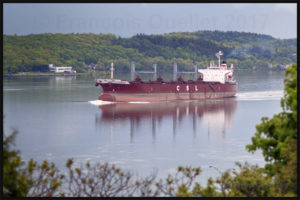When someone wants to do street photography, he must continually ask himself: “What don’t I see, but that is there? What do I take for granted but that would deserve a different approach?”
While I was heading to Old Quebec, I walked by the Jeanne d’Arc park. This park is known for its beautiful flowers and its huge statue of Jeanne d’Arc. But how could I get the statue without the flowers?
I was looking left and right when I finally looked straight up to see, in the background, hundreds of snow geese flying at high altitude and enroute for the Arctic. I had to very rapidly find a way to photograph the statue and the snow geese.
A few seconds later, the tip of Jeanne d’Arc’s sword was pointing towards the snow geese, making a link between the two subjects.
On a more theoretical note, an abstract diagonal line crossed the photo, starting from the front of the horse and going through the rider, the tip of the sword and following the two lines of geese, ending in the upper right corner of the picture.
The picture was taken with a Canon 5DSR full frame camera equipped with a Canon EF 85mm f/1.2L II USM.
For other street photos, click on:



